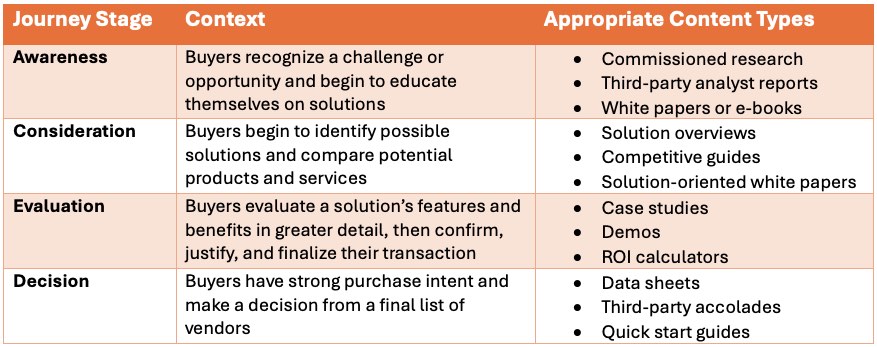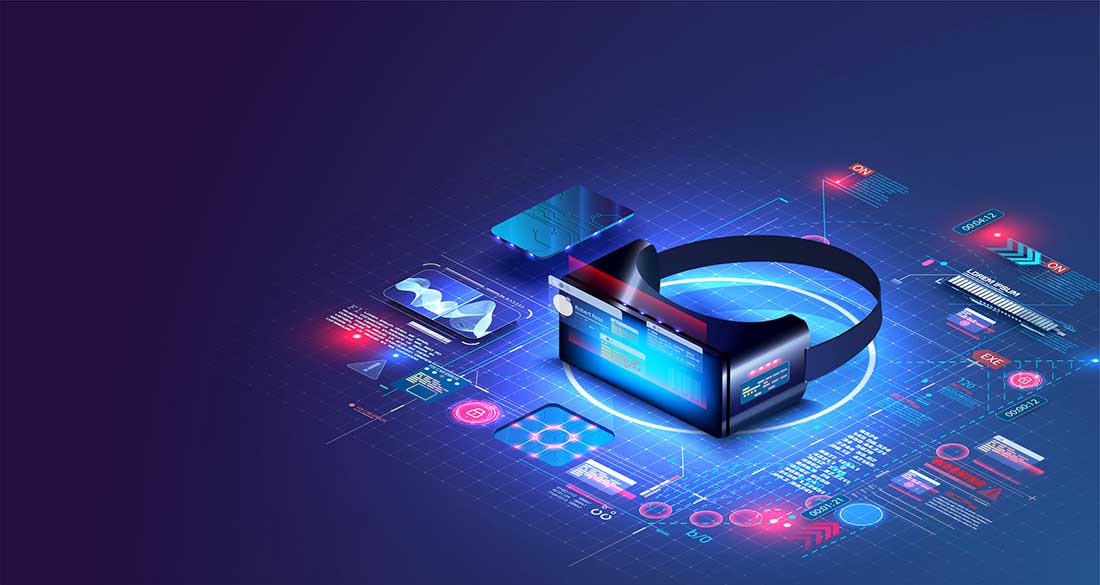What is B2B copywriting, and why is it so important for organizations to get it right?
B2B copywriting, which involves a business creating content targeting other businesses, is key to marketing and sales success. For example, in Content Marketing Institute’s Outlook for 2025 Benchmark report, B2B marketers say that quality content helps them generate demand, nurture leads, boost customer loyalty, and drive revenue.
In this blog post, we’ll review:
- What B2B copywriting is
- Why B2B content needs to be great
- The difference between B2B and B2C copywriting
- B2B copywriting challenges
- Copywriting for B2B buyer personas and journey stages
- B2B copywriting mistakes to avoid
What Is B2B Copywriting?
B2B copywriting is the practice of developing content that helps businesses market and sell their products and services to other businesses.
B2B copywriting involves a mixture of research, writing, marketing, branding, and strategy. B2B copy apply to a range of formats, from web pages and emails to brochures, e-books, sales playbooks, and video scripts.
Why Does B2B Copywriting Need to Be Great?
B2B buyers are inundated with messages and content. In a single day, 333.2 billion emails are sent, 650 million posts are created on X, and 2.5 quintillion bytes of data are produced.
What’s the natural response to this oversaturation? Limited interest, a shortened attention span, and a lower tolerance for poor-quality content.
To capture a reader’s attention, we must create relevant, high-quality, valuable content.
B2B and B2C Copywriting: What’s the Difference?
The B2B and B2C markets often have key differences, including their target audiences and the marketing strategies to reach them. That said, it can be challenging to make generalizations about them. Take a look at the table below, where we outline some of the basic differences at a high level.

B2B Copywriting Challenges
When it comes to B2B copywriting, content creators must address a number of challenges, including:
- Longer buying process. The B2B buyer journey can take months, rather than just minutes or hours like the B2C buyer journey. As a result of this, B2B copy needs to provide information in progressive chunks to help guide buyers through the different stages in their purchase journey.
- Multiple audiences. There are usually multiple people involved in B2B decision-making. This means that B2B copywriters often need to write for multiple personas at once.
- Technical topics. In the B2B market, content often covers very technical topics, and it can be dense or dry compared to consumer marketing copy. The challenge is to make this technical content compelling and readable.
- Credibility and trust. Since B2B content is often more technical than that of B2C, there’s a greater need for subject matter expertise. B2B buyers expect authoritative and educational content. Only with a strong understanding of the subject matter can you write with clarity and authority.
- Striking the right tone. While B2B copy should sound professional, B2B writers often overshoot the goal with copy that’s stuffy, formal, or filled with marketing-speak. Writers must strike a balance with copy that is both professional and approachable.
- Considering the competition. B2B buyers conduct extensive research before making a purchase decision. So B2B copywriters must understand how their competitors describe their products’ features and benefits. Only then can they effectively play up their own products’ strengths and differentiators.
Writing for B2B Buyer Personas
A common misconception of B2B copywriting is that you’re writing for businesses. You’re actually writing for businesspeople, who are, after all, people. To capture and hold people’s attention, your B2B copywriting must speak to what your target audience cares about—their priorities, challenges, opportunities, and what keeps them up at night.
Those specific audience careabouts and pain points should be distilled into B2B buyer personas—which are essential for effective copywriting.
Buyer personas provide insights into your buyer’s challenges, objections, motivations, decision-making process, and even the type of content or media they consume. The most useful buyer personas are rooted in research, such as customer surveys and user interviews.
B2B copywriters and content marketers can use buyer personas as a handy reference to keep their copy consistent from project to project and laser-focused on these customer needs and behaviors. For example, Executive Emma has little time for lengthy copy and wants bottom-line statistics on ROI and cost savings, while Skeptical Sam needs to know how your solution gives them time back during the day and keeps the systems they manage from crashing.
Not sure if your B2B buyer personas are up to snuff? Check out our article on three best practices for developing targeted B2B personas.
Writing for B2B Customer Journey Stages
B2B marketing material should target not only individual buyer personas, but also their stage of the customer journey. The customer journey is the path your customers follow as they discover your business and explore a purchase.
The B2B customer journey can look very different, depending on the company and customer. But in general, there are four distinct stages to the B2B customer journey that copywriters can reference for their content creation:

You might encounter alternative labels for these stages, such as Discover, Explore, Engage, and Buy. Find the labels that work best for your audience and start mapping your content to each of these stages. Keep an eye out for content gaps in the purchase journey—are your customers getting their informational needs met at every step?
To learn how to raise your journey mapping game, read our post on how to build a better customer journey map.
B2B Copywriting: 3 Mistakes to Avoid
Keep these three B2B copywriting mistakes top of mind as you craft B2B content.
Mistake #1: Crafting Dense, Jargon-Filled Content
Copywriters often try to cram a huge amount of complex, technical information into their copy, forcing readers to wade through long blocks of text, technical jargon, and endless lists of features and benefits. This practice does your reader no favors and will in fact turn them away.
To make your copy more scannable and visually engaging, remember to:
- Break up large paragraphs.
- Include bolded words and bulleted lists.
- Avoid technical jargon and empty phrases.
- Vary between short, medium, and long sentences.
- Limit the number of adjectives, features, and benefits you list.
At the same time, make sure to use enough keyword-dense content to optimize your site’s SEO rankings (without keyword stuffing).
Mistake #2: Starting Without a Brief
For every B2B assignment, there should be a detailed content brief that outlines the intended audience, messaging, positioning, brand voice, tone, and deliverables.
Content briefs are especially important in the B2B market, due to the number of internal and external stakeholders. With so many differing opinions and priorities, it’s important to get alignment and provide focus for the task at hand.
Mistake #3: Keeping B2B Copy Superficial
In consumer advertising, you might be able to skate by with a clever pun or a catchy tagline. But B2B buyers are making purchases at a higher price point and with a longer commitment than individual consumers are, so you’ll need stats and cold, hard facts to sell them on your services.
Put in the time to research your industry and your customers’ pain points and purchasing behaviors. Prove the ROI your services can provide to potential buyers, and you’ll be speaking their language.
Additional B2B Copywriting Resources
On the hunt for more B2B copywriting advice? Check out our top 10 tips for better B2B copywriting.
Looking to add some powerful, persuasive copy to your B2B brand? Lean on Tendo’s editorial services to help you create and scale compelling and authentic content that delivers results for your brand. Get in touch with our team of talented marketers and content strategists today.
First published November 28, 2020








